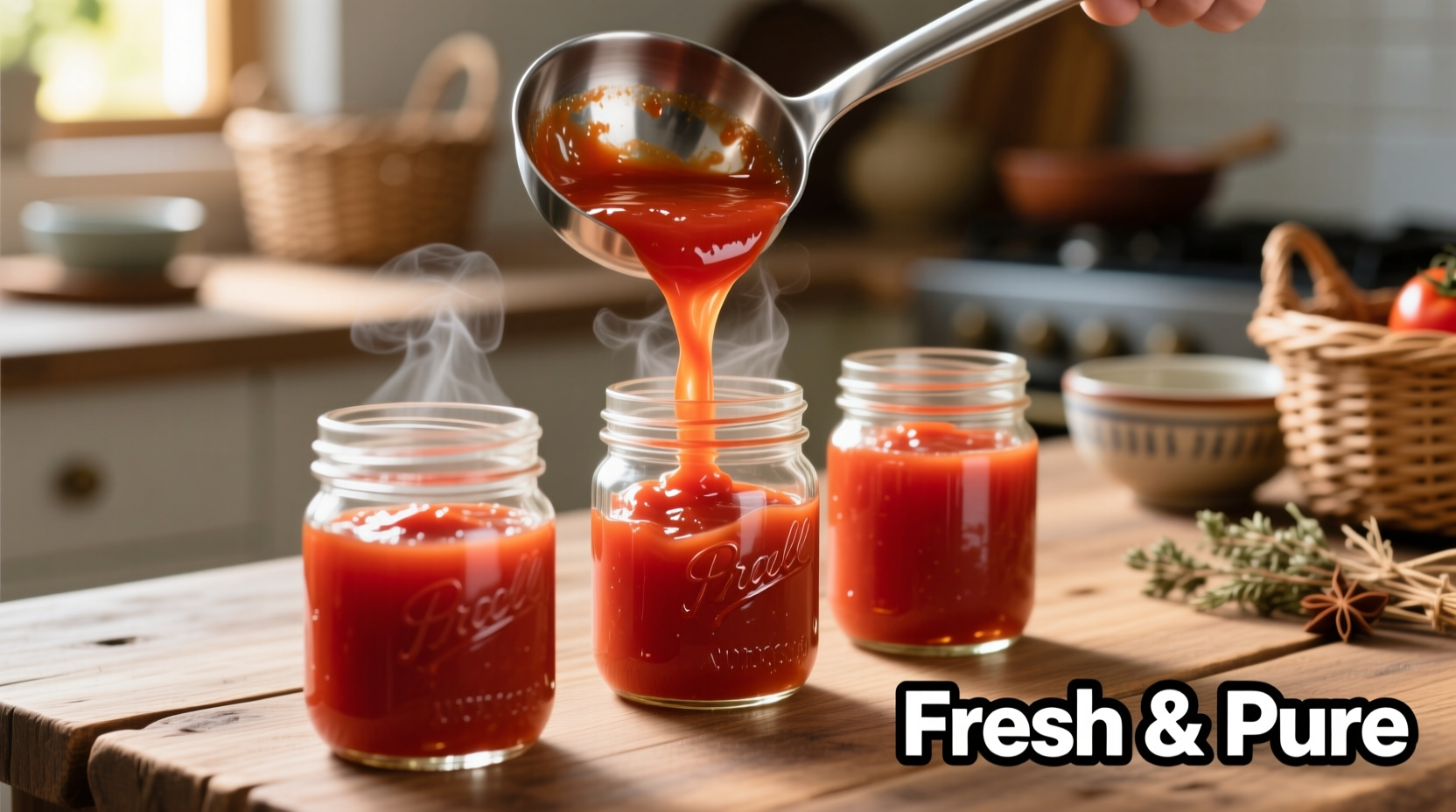Properly canned tomato puree can be safely stored for 12-18 months when processed using tested methods with adequate acidity (pH below 4.6) and correct processing times. The safest home canning method for tomato puree is water bath canning with added citric acid or lemon juice to ensure proper acidity levels.
Preserving summer's tomato bounty through canning gives you vibrant, flavorful puree ready for sauces, soups, and stews all year round. This comprehensive guide walks you through every step of safely canning tomato puree at home, drawing on decades of food preservation science and practical kitchen experience. You'll learn professional techniques that ensure safety while maximizing flavor—techniques that transform ordinary home canning into a reliable method for creating pantry staples that outperform store-bought alternatives.
Essential Equipment for Successful Tomato Puree Canning
Before you begin, gather these critical tools. Using proper equipment isn't just convenient—it's essential for food safety. The National Center for Home Food Preservation emphasizes that appropriate tools prevent contamination and ensure proper processing.
| Equipment | Minimum Requirement | Professional Tip |
|---|---|---|
| Water Bath Canner | Large pot with rack, lid, and thermometer | Use a canner with adjustable legs for precise water level control |
| Jars | Quart-sized Mason jars with new lids | Inspect rims carefully—any chips mean discard the jar |
| Acidifier | Citric acid or bottled lemon juice | Use 1 tablespoon bottled lemon juice per pint for consistent acidity |
| Processing Time | 35-40 minutes for pints | Adjust for altitude—add 5 minutes per 1,000 feet above sea level |
Critical Safety Considerations for Canning Tomato Puree
Tomato acidity varies significantly based on variety and ripeness. The USDA requires adding acid to all home-canned tomato products because modern tomato varieties often fall above the critical pH threshold of 4.6 needed to prevent botulism growth. Never skip this step—even "old family recipes" that omit added acid risk serious foodborne illness.
According to the National Center for Home Food Preservation, proper acidification means adding either:
- 1 tablespoon bottled lemon juice per pint (2 tablespoons per quart)
- 1/4 teaspoon citric acid per pint (1/2 teaspoon per quart)
These amounts ensure safe acidity regardless of tomato variety. Vinegar changes flavor significantly, so lemon juice or citric acid are preferred for puree.
Step-by-Step Canning Process
Follow these professional-tested steps for perfect results every time:
Preparation Phase
- Wash and sort tomatoes—discard any with mold or significant blemishes
- Blanch tomatoes in boiling water for 30-60 seconds, then transfer to ice water
- Peel skins—they should slip off easily after blanching
- Remove cores and stems—cut away any green areas
Cooking and Pureeing
- Cook tomatoes in stainless steel pot until soft (about 20 minutes)
- Pass through food mill to remove seeds and remaining skin
- Return puree to heat and simmer 10 minutes to concentrate flavor
- Add acid according to USDA guidelines mentioned earlier
Processing and Sealing
- Heat jars in simmering water (180°F) while preparing puree
- Fill jars with hot puree, leaving 1/2 inch headspace
- Remove air bubbles with non-metallic utensil
- Wipe rims with clean damp cloth before applying lids
- Process in water bath according to table above

Storage Guidelines and Shelf Life
Properly canned tomato puree maintains best quality for 12-18 months when stored in a cool, dark place (50-70°F). The FDA recommends checking jars before use:
- Discard any jar with bulging lid, spurting liquid, or off odors
- Refrigerate after opening and use within 5 days
- Always boil home-canned tomatoes for 10 minutes before consumption
While canned tomatoes remain safe beyond 18 months if properly sealed, flavor and nutrient quality gradually decline. For best results, use within one year.
When NOT to Can Tomato Puree
Understanding limitations prevents dangerous mistakes. Never can tomato puree when:
- Using heirloom varieties with unknown acidity levels
- Adding low-acid ingredients like onions, garlic, or peppers without pressure canning
- Processing in an oven or dishwasher (neither achieves proper temperatures)
- Using recycled commercial jars (Mason jars only)
The University of Minnesota Extension emphasizes that adding even small amounts of low-acid ingredients requires pressure canning at specific temperatures—water bath canning becomes unsafe.
Troubleshooting Common Issues
Even experienced canners encounter problems. Here's how to handle frequent challenges:
- Siphoning (liquid loss): Caused by rapid temperature changes—cool jars gradually after processing
- Cloudy liquid: Usually harmless mineral deposits from hard water—safe to consume
- Darkening at top: Headspace too large—always maintain 1/2 inch
- Seal failure: Re-process within 24 hours with new lid, or refrigerate and use promptly
Creative Uses for Homemade Canned Tomato Puree
Your canned puree shines in recipes where commercial products fall short:
- Concentrated flavor base for soups and stews (reduce cooking time by 30%)
- Homemade pizza sauce with just puree, garlic, and herbs
- Infused oils—simmer puree with herbs for flavored cooking oil
- Tomato ice cubes—freeze small portions for single servings
Professional chefs often keep canned puree on hand because its consistent quality outperforms fresh tomatoes during off-season months.
Evolution of Home Tomato Canning Practices
Home canning has evolved significantly since the 19th century:
- 1800s: Early methods used open kettles with inconsistent results
- 1909: USDA published first science-based canning guidelines
- 1940s: Research established critical pH levels for safety
- 1994: Modern guidelines introduced mandatory acidification for tomatoes
- Today: Precision thermometers and tested recipes make home canning safer than ever
This progression reflects growing understanding of food science—today's methods incorporate decades of research to maximize both safety and flavor.











 浙公网安备
33010002000092号
浙公网安备
33010002000092号 浙B2-20120091-4
浙B2-20120091-4